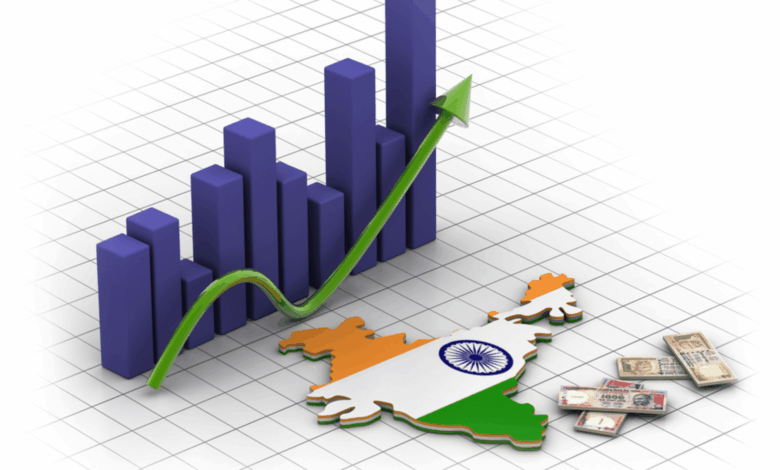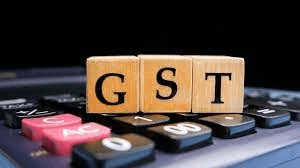
According to the International Monetary Fund (IMF), India is set to officially overtake Japan to become the world’s fourth largest economy by 2025 with a nominal gross domestic product (GDP) of US$ 4.187 trillion. NITI Aayog CEO B.V.R. Subrahmanyam highlighted the development, saying that only the US, China and Germany are now ahead of India in the global economy rankings. Technological advancements, strong domestic consumption, strategic policy reforms, increasing global trade and strong economic growth driven by manufacturing are the reasons for India’s success.
This success underlines the impact of ‘Make in India’, as well as the Product Linked Incentives (PLI) schemes. These have boosted manufacturing and exports. India is poised to become the third largest economy in the coming years with a sustained focus on infrastructure development, digital innovation, a skilled young workforce, and skill upgradation. This sustained growth is expected to increase India’s Gross Domestic Product (GDP) to $5.58 trillion by 2028, overtaking Germany to become the third largest economy in the world.
India’s Economic Journey Over Decades
When we look at the growth of the Indian economy, it was a relatively slow economy growing at an average of 3.1% per annum between 1950-1970. There was a significant improvement in the 1980s as the economy grew at an average of 5.5% per annum. The decade of 1990-2000 was a period of economic liberalization and reforms. This led to further growth. Since 2000, India has witnessed rapid growth, with average annual growth rates exceeding 8% in some years. The key factors for all this growth were economic liberalization (1991), investment rates, industrialization, growth of the service sector, etc. Since economic development is a continuous process, we can become the third largest economy in the world. We should be proud that India is becoming one of the powerful countries in the world. We should appreciate this quantitative change. At the same time, we also need qualitative change in various sectors and aspects.
Major Constraints in India’s Economy
On the other hand, our Indian economy faces several significant constraints such as unemployment, poverty, inflation, environmental degradation, lack of infrastructure, over-reliance on agriculture, income inequality, low educational standards, and insufficient skill development, which hinder economic growth. Weak demand, lack of investment, and dependence on foreign investment are also major challenges for our economy.
Agriculture vs Services Sector Contribution
Nearly 50% of the Indian workforce is employed in agriculture, but this sector contributes only 18% to the Gross Domestic Product (GDP). On the other hand, service sectors such as information and technology (IT), finance, and real estate contribute more than 50% to the Gross Domestic Product (GDP). Only 30% of the workforce is concentrated in urban areas. According to a Clear Tax report, India’s per capita income in 2025 is estimated to be around US$ 2,880. The World Bank estimates that the world’s per capita gross domestic product (GDP) will be $13,138 by 2023. In 2024,
India’s per capita net food grain availability is estimated to be about 568 grams per day. This figure includes rice, wheat, maize, other cereals, and various pulses. Although India has increased its per capita food grain availability, it is still lower than that of the United States (US), which has a per capita food grain availability of over 1,100 kg. In 2024, India had about 13.4 doctors per 10,000 people. China had 24 doctors per 10,000 people. In India, a significant portion of savings is converted into investments, with the investment rate historically being 30-31% of GDP. In 2023, China’s average savings rate was significantly higher than that of the United States. China’s average domestic savings rate is 44.4%.
Income Inequality and Poverty
According to an Oxfam report, in India, the richest 1% own more than 40% of the total wealth, while the bottom 50% own only 3%. The proportion of people living on less than US$2.15 a day in India is expected to be around 2.3% by 2025. In 2022-23, about 75.24 million people in India lived in extreme poverty. The unemployment rate for people aged 15 and above in India was 5.1% in April 2025. This is the first time the government has released monthly unemployment data. The unemployment rate for men was 5.2% and for women it was 5.0%. The unemployment rate in the US was 4.2% in May 2025, according to data from the Federal Reserve Bank of St. Louis and the Bureau of Labor Statistics. According to Trading Economics, the unemployment rate in China is currently 5.1%. Inflation rate in India in April 2025 was 3.16%. It is -0.1% in China and 2.3% in America.
Global Index Rankings
In addition, when we look at India’s ranks in various aspects. India is ranked 105th in the Global Hunger Index (GHI). It is ranked 180th in the Environmental Performance Index (EPI). It is ranked 134th in the Human Development Index (HDI). Similarly, it is ranked 162nd in the World Press Freedom Index, 116th in the World Peace Index, and 93rd in the Corruption Perception Index (CPI). These are obstacles to India’s economic development.
Need for Qualitative Changes and Reforms
Therefore, the Indian economy needs to shift towards qualitative changes, and institutional reforms such as improving the quality of life, transparency, accountability and efficiency in government administration are more important than just increasing production. Simplifying bureaucratic processes, improving services by reducing red tape, reducing corruption, strengthening the judiciary and regulation, and labor market reforms are also important. India needs technological advancements such as tax incentives, promoting research and development in areas such as artificial intelligence, quantum computing, and biotechnology through university-industry partnerships.
Infrastructure development such as building industrial corridors, improving digital infrastructure, improving trade integration, and improving India’s global trade through free trade agreements, etc. Our economy also needs psychological and cultural changes. These will foster a culture of innovation and entrepreneurship. We need financial support, mentorship, etc. for budding entrepreneurs through programs like “Startup India”.
Decentralized employment hubs will be created by strengthening the National Education Policy (NEP) 2020 to reduce structural unemployment and reduce regional disparities. India still needs environmental sustainability. This can be achieved through green infrastructure investments, climate action plans, energy-efficient operations, waste management, and promotion of public transport. By implementing these comprehensive reforms, India can pave the way for becoming the world’s largest economy, fostering sustainable inclusive growth for its citizens.











